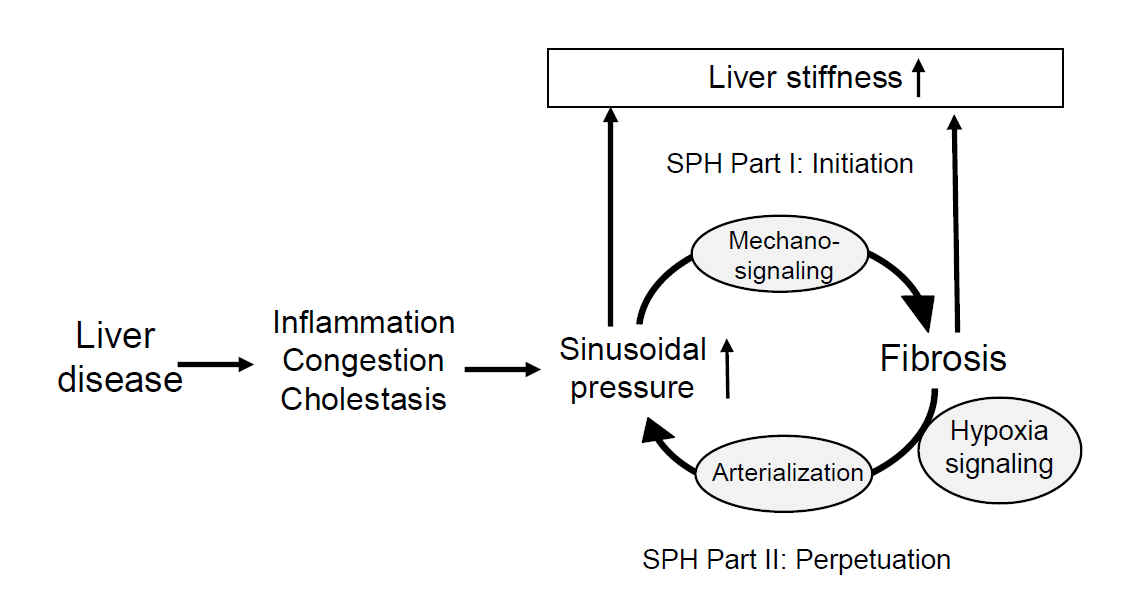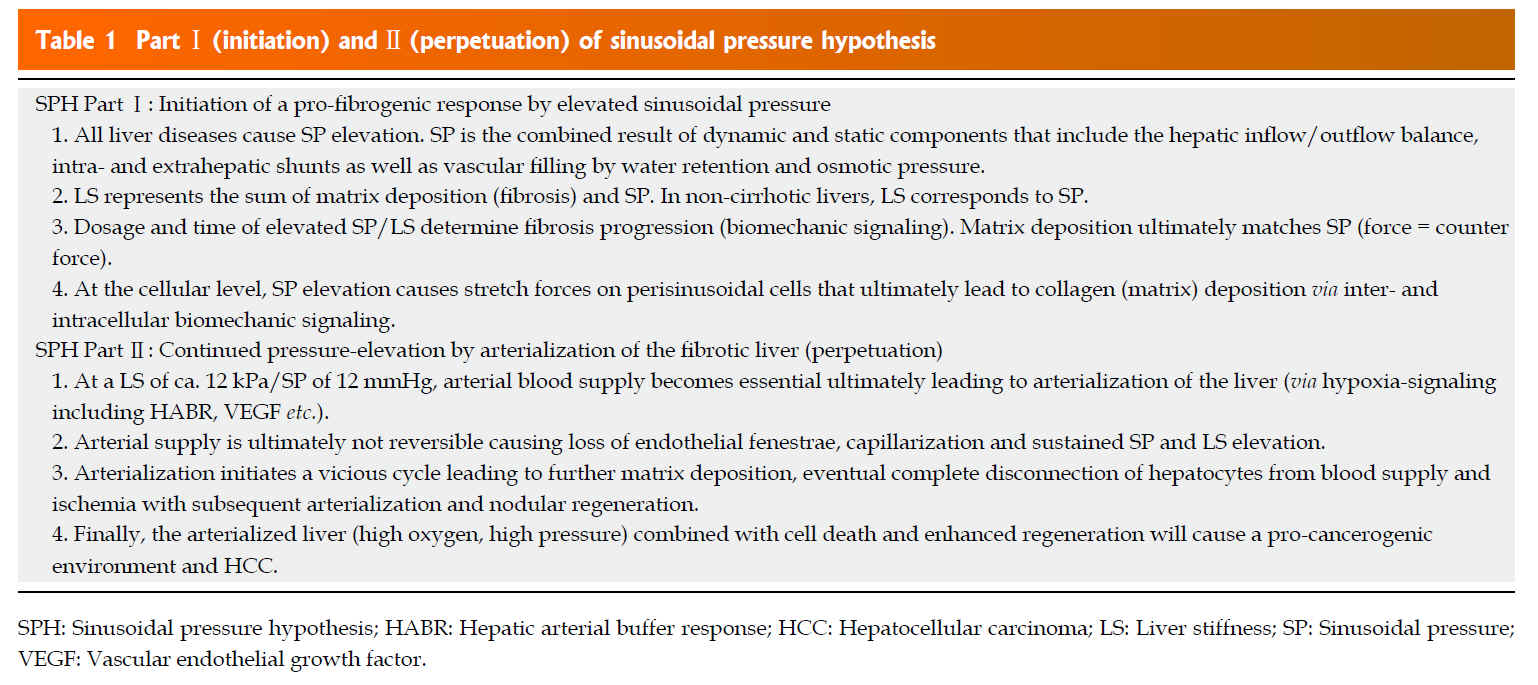The paper in WJG introduced the sinusoidal pressure hypothesis (SPH), which identifies an elevated sinusoidal pressure (SP) as cause of fibrosis. SPH has been mainly derived from recent studies on liver stiffness. Figure below demonstrates the principle of the sinusoidal pressure hypothesis (SPH). Part I (initiation) encompasses elevation of sinusodial pressure with stretch-force induced mechanosignaling ultrimately leading to matrix deposition (fibrosis). The elevated stiffness and vascular resistance finally lead to a predominant arterial blood supply (arterialization) which exposes the liver permanently to high pressures (SPH Part II, perpetuation). Thus, vicious cycle is initiated that ultimately causes irreversible liver cirrhosis. The SPH is able to explain the macroscopic changes of the cirrhotic liver and the uniform fibrotic response to various etiologies. This novel concept will hopefully stimulate the search for new treatment strategies.

